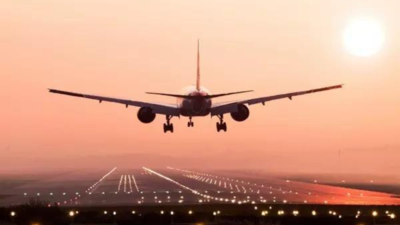Capex at small private airports to surge 50–60% annually over next 3 years: Crisil

Capital expenditure (capex) at small private airports in India is expected to increase by 50–60 per cent annually over the next three years, driven by capacity expansion amid rising terminal utilisation levels, ratings agency Crisil said on Monday.In contrast, capex at large private airports is projected to decline over the same period, as most of their capacity expansion projects are either completed or nearing completion, the agency added as quoted by news agency PTI.Despite the uptick in investment at smaller airports, the overall capex by private airports is expected to slow marginally by 10–15 per cent to around Rs 40,000 crore over the next three years, according to Crisil.The agency’s analysis is based on the capex plans of 11 operational private airports and two soon-to-be-operational ones, which together account for more than 95 per cent of India’s private airport passenger traffic.For the purpose of this analysis, small private airports are defined as those with a capacity of less than 20 million passengers per annum and located in cities such as Ahmedabad, Guwahati, Jaipur, Trivandrum, Mangalore, Lucknow, and Goa. Large private airports are those handling more than 20 million passengers annually or located in metro areas like Delhi-NCR, Mumbai MMR, Bangalore, and Hyderabad.Capex at small private airports is set to rise 50–60 per cent on average during fiscals 2026–2028 compared to the previous three fiscal years. This growth will be fuelled by capacity expansion, as terminal utilisation has risen sharply, Crisil said.“Small private airports are expected to embark on a significant expansion of up to 1.5 times their current base by fiscal 2028. This is in response to escalating travel demand and moderate capacity on the ground,” said Ankit Haku, Director at Crisil Ratings.Passenger traffic at these airports has shown a robust compound annual growth rate (CAGR) of around 45 per cent between fiscals 2022 and 2025, driven by strong demand and recovery in air travel. However, capacity growth has lagged, with a modest CAGR of around 20 per cent, pushing terminal utilisation levels to 60–90 per cent and creating a pressing need for expansion, Haku noted.In comparison, large private airports are expected to see reduced capacity additions, having already undergone substantial expansions in recent years. These upgrades have absorbed high passenger growth while maintaining terminal utilisation at a stable 80–85 per cent, Crisil said.New greenfield airports are also scheduled to become operational this fiscal year, with limited additional capex required. Their strategic locations near tier-1 cities reduce off-take risk and support a smooth ramp-up in passenger and cargo volumes.According to Crisil, most upcoming capital expenditure in the sector will be directed towards maintenance – such as equipment refurbishment, amenity upgrades, and infrastructure development – rather than expansion.“While capex intensity for small private airports will rise to over 2 times, project risk will be manageable since these are expansions of existing sole airports in their respective cities. Further, their sponsors’ expertise in operating large private airports and their strong fundraising capabilities also mitigate some of the risks,” said Gauri Gupta, Team Leader at Crisil Ratings.Capex intensity refers to the ratio of capex to earnings before interest, taxes, depreciation, and amortisation (EBITDA).For large airports, the slowdown in capex presents an opportunity to optimise existing capacity, with traffic growing at a CAGR of around 30 per cent over the last three fiscal years. “Further, an established regulatory tariff framework that provides a pass-through of capex costs with reasonable returns remains conducive for the sector,” Gupta added.




